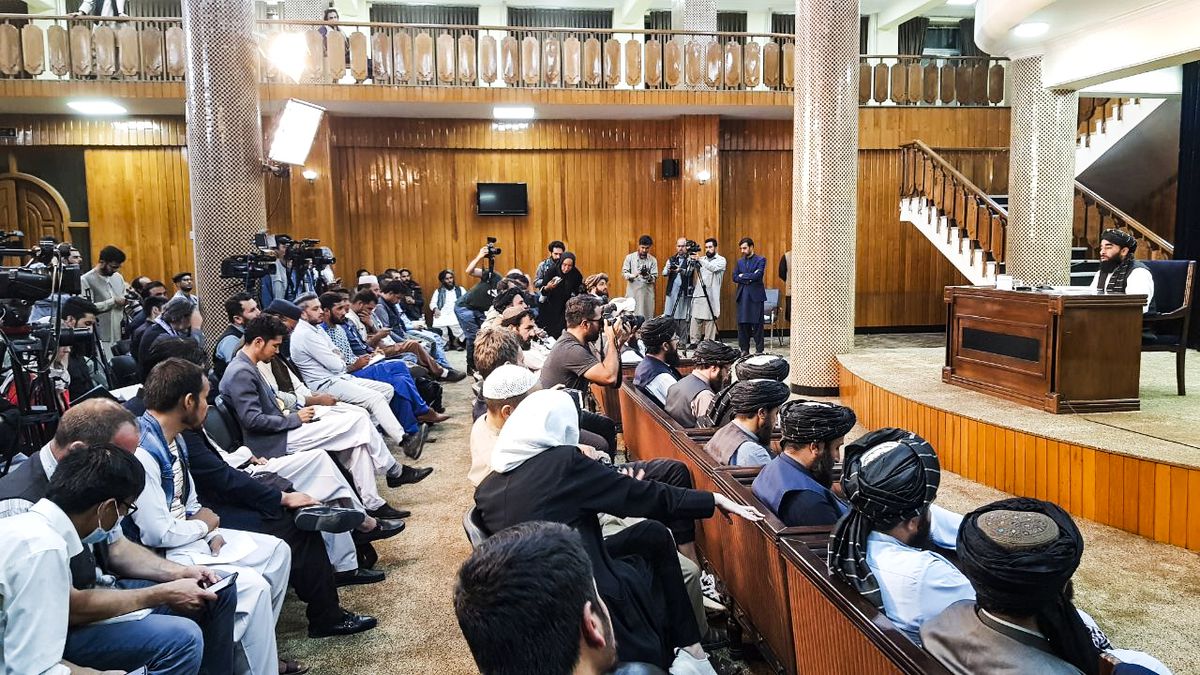
The Taliban Pendulum By Salman Javed
Unwelcomed yet inevitable, the foreseen transformation in Afghanistan has entered its third year. Two years of Islamic Emirate of Afghanistan (IEA) were not without the deepest apprehensions and surprises. Just as the second year was ending, the United States also entered the list of countries who are engaging with the IEA without formally recognising the Taliban-led government in the country. But countries diplomatically engaging with the Taliban is not equivalent to “all is well and good.” Problems exist and persist. While two years are certainly not an ideal time window to measure progress in a country hit by war for decades, it is enough time to set a tone; to lay some ground for the vision by which the new rulers of the country intend to rule.
From the vision of the IEA, one thing is clear; the values-based “standoff” between the Taliban and the West is not coming down anytime soon. Because the Taliban stand true to what they fought for and to them, it is finally time to establish the Emirate that was their long-pursued dream. But, contrary to the fears of many, and just like a blow of fresh air, we find the Afghan Taliban, who now make the interim government, to be more open than they previously were. More open to the world, more open to the diverse ethnicities that inhabit the country, more open to entering into arrangements of economic value, more open to being part of international dialogue, and more open to meeting the flashy demands of the world of “optics.”
But as we know, all is not well and good. The matter of girls banned from schools and women from work is the epitome of Taliban’s none-to-zero evolution from their predecessors of the 90s. The organisational memory weighs heavily on matters beyond girls’ education as well. Interestingly, the “standoff” on values does not exist when IEA’s engagement potential with the majority Muslim countries in regional radius comes into question. Having seen Afghanistan upfront during all these years of war, countries in the immediate neighborhood know what the world only understands.
Bearing the fact that Afghanistan’s neighbors were some of the few to not isolate it just after Kabul’s takeover, memory of the past helps explain why and how IEA’s relations with some of its neighbors have gradually gone sour in these two years. Embracing the touch of China with open hands and showing all willingness to pursue halted projects with Uzbekistan, the IEA came off as ambiguous when it comes to responding to some hardened-over-time bones of contention with Iran, Tajikistan, and Pakistan. This ambiguity, however, is not like India’s “strategic ambiguity” that it retains to balance off between sharply contrasting interests of the various multi-nations forums. This ambiguity is rather more unintentional; a residue of a combination of the Taliban’s organisational memory and compliance to the surge for optics.
Taking the case of IEA’s relationship with Pakistan, it was generally hoped that the bilateral relation would be an upgrade from the time of the Republic. But the IEA finds itself trying to consolidate power within, and a natural outcome is, it tries to resonate with the general sentiment within its ranks and files and beyond. The general sentiment often likes to name Pakistan for Afghanistan’s troubles, while also simultaneously reiterating the nostalgia of times when borders did not exist as they exist today. The IEA might understand what benefits cooperation and widening trade avenues with Pakistan will bring, especially if China-Pakistan Economic Corridor’s (CPEC) expansion to Afghanistan is materialised, but it is also partially handicapped by the burden of memory.
From the Soviet invasion to civil war and then War on Terror (WoT), both countries had little choice but to be intertwined in a web of developments that were rapidly unfolding. Pakistan accommodated (and still does) large numbers of Afghans fleeing their unsafe homes. Back then, it was the need of the hour to fight together, and both countries did. But this chapter of history has unfortunately been imprinted in the memory of the Afghans as undue “interference” from Pakistan. The IEA rightfully seeks to preserve Afghanistan’s sovereignty with an iron fist stance on no intervention and interference in internal matters. But while adhering to this policy, it overlooks the legitimate calls for resolving issues, and also looks away from the alleged interference in other countries on its part.
The case of the banned Tehrik e Taliban Pakistan (TTP) offers a good example. From “plausible deniability” to nearly terming it an internal matter, the IEA’s response to Pakistan’s concerns over the presence of TTP commanders inside Afghanistan has best demonstrated the ambiguity that was mentioned a while ago. It is true that the Afghan Taliban, as an organisation, share affiliation with TTP but what they are failing to understand is that they are no more just an organisation but a de facto government of a country. They are also failing to understand that unless their response to the issue shifts from ambiguity to clarity, nothing substantial and beneficial can come out of their bilateral relationship with Pakistan.
For its pragmatism to bear maximum fruit, the IEA’s diplomacy is half a success story unless it outgrows the burden of memory and demand of optics; to forge meaningful cooperation in its regional radius. It will be some time till the Taliban 2.0 walk fully out of the shadow of Taliban 1.0.
The Taliban Pendulum By Salman Javed
Source: https://www.nation.com.pk/20-Aug-2023/the-taliban-pendulum

